http://digitaljournalist.org/issue0309/lm_intro.html
Here are some of them:
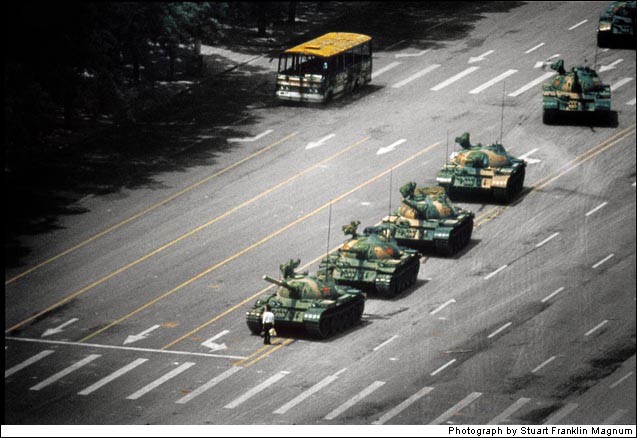 Tiananmen Square, 1989. The Communist Party dispatched the military to deal with the thousands of protestors in China calling for liberal and democratic reforms. This man stepped in front of a column of tanks, and continued to block the tanks when they tried to drive around him, despite that a day ago the military had been seen to use deadly force against unarmed protestors. He then climbed on top of the lead tank and held a conversation with the commander. Eventually onlookers pulled him aside. The photo became the icon for the unrest in China for people worldwide. The "Tank Man" was never seen again.
Tiananmen Square, 1989. The Communist Party dispatched the military to deal with the thousands of protestors in China calling for liberal and democratic reforms. This man stepped in front of a column of tanks, and continued to block the tanks when they tried to drive around him, despite that a day ago the military had been seen to use deadly force against unarmed protestors. He then climbed on top of the lead tank and held a conversation with the commander. Eventually onlookers pulled him aside. The photo became the icon for the unrest in China for people worldwide. The "Tank Man" was never seen again.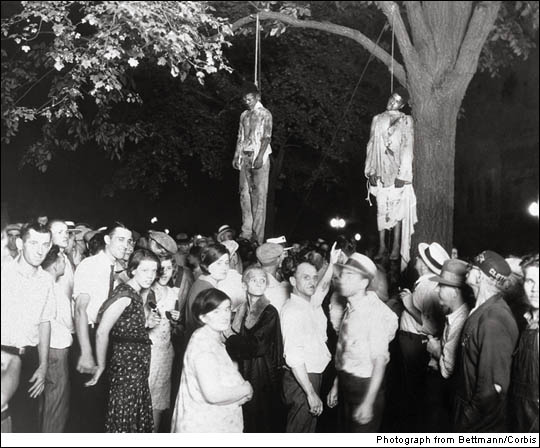 This is what is known as lynching. The black men had been accused of raping a white girl. There was a third accused negro, but the girl's uncle stood up for that one.
This is what is known as lynching. The black men had been accused of raping a white girl. There was a third accused negro, but the girl's uncle stood up for that one.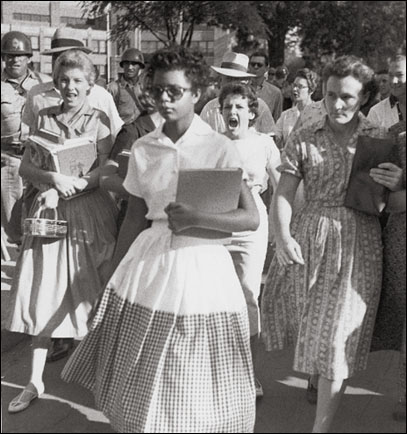 The US had just begun outlawing racial segregation. Naturally it didn't go down well.
The US had just begun outlawing racial segregation. Naturally it didn't go down well.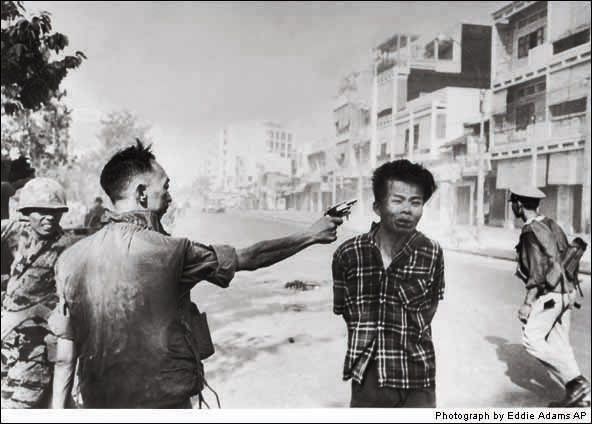 A South Vietnamese police chief executes a suspected Vietcong guerilla captain. Although the photographer saw the executor as a hero, the US public thought differently.
A South Vietnamese police chief executes a suspected Vietcong guerilla captain. Although the photographer saw the executor as a hero, the US public thought differently.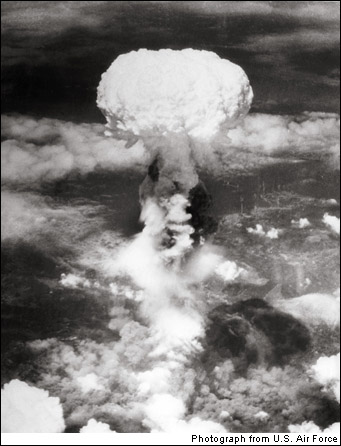 This... is Nagasaki on August 6, 1945.
This... is Nagasaki on August 6, 1945.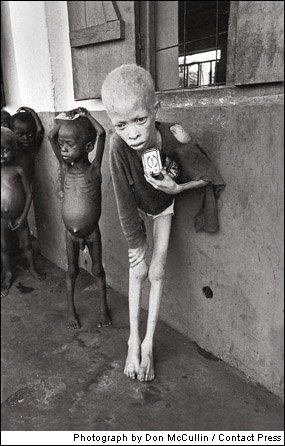 McCullin, sent to cover a war in Biafra, "lost interest" in photographing soldiers and instead took pictures of what I learned in class as kwashiorkor, a protein deficiency. Bloated bellies is one symptom.
McCullin, sent to cover a war in Biafra, "lost interest" in photographing soldiers and instead took pictures of what I learned in class as kwashiorkor, a protein deficiency. Bloated bellies is one symptom.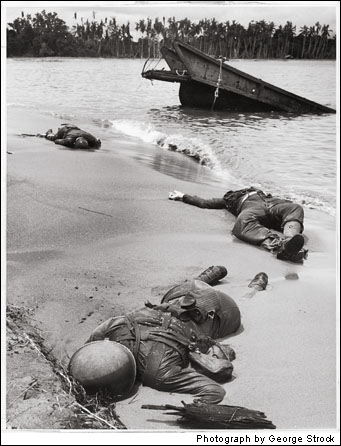 8 months after Pearl Harbor, Roosevelt decided that the US was growing complacent, and lifted the ban on photos of US war casualties.
8 months after Pearl Harbor, Roosevelt decided that the US was growing complacent, and lifted the ban on photos of US war casualties. These are the streets of Athens, Greece. The smoke is coming from smoke grenades. This isn't one of the 27 photos provided in the link above; it was taken eleven days ago.
These are the streets of Athens, Greece. The smoke is coming from smoke grenades. This isn't one of the 27 photos provided in the link above; it was taken eleven days ago.http://en.wikipedia.org/wiki/2008_Greek_riots




No comments:
Post a Comment